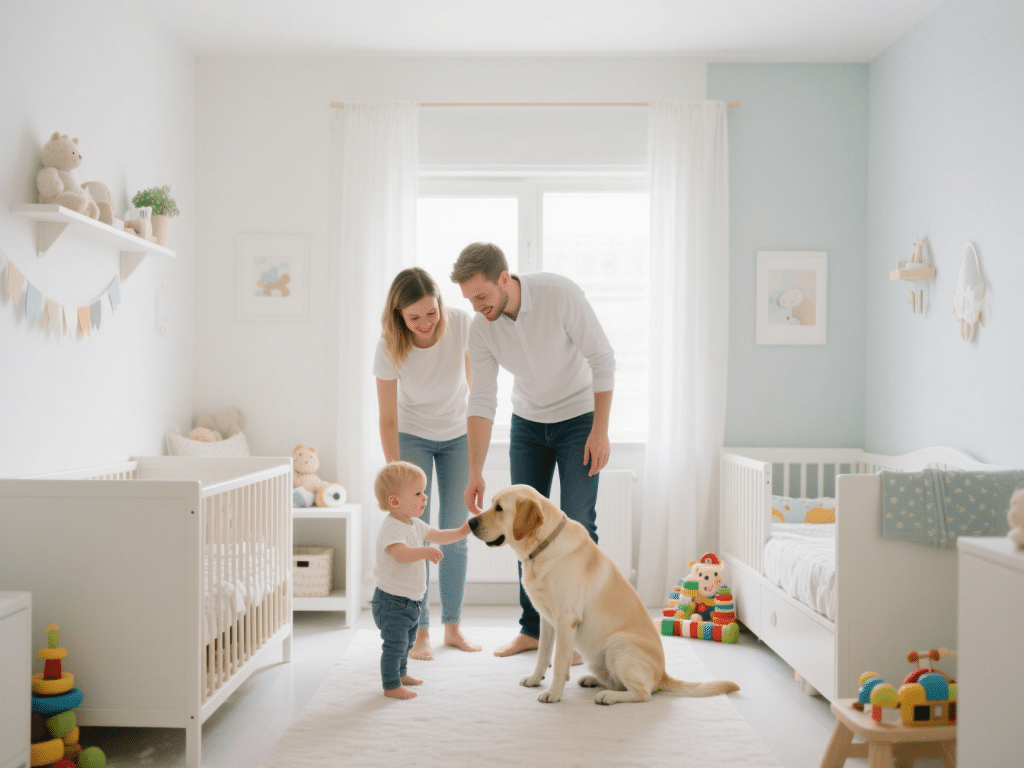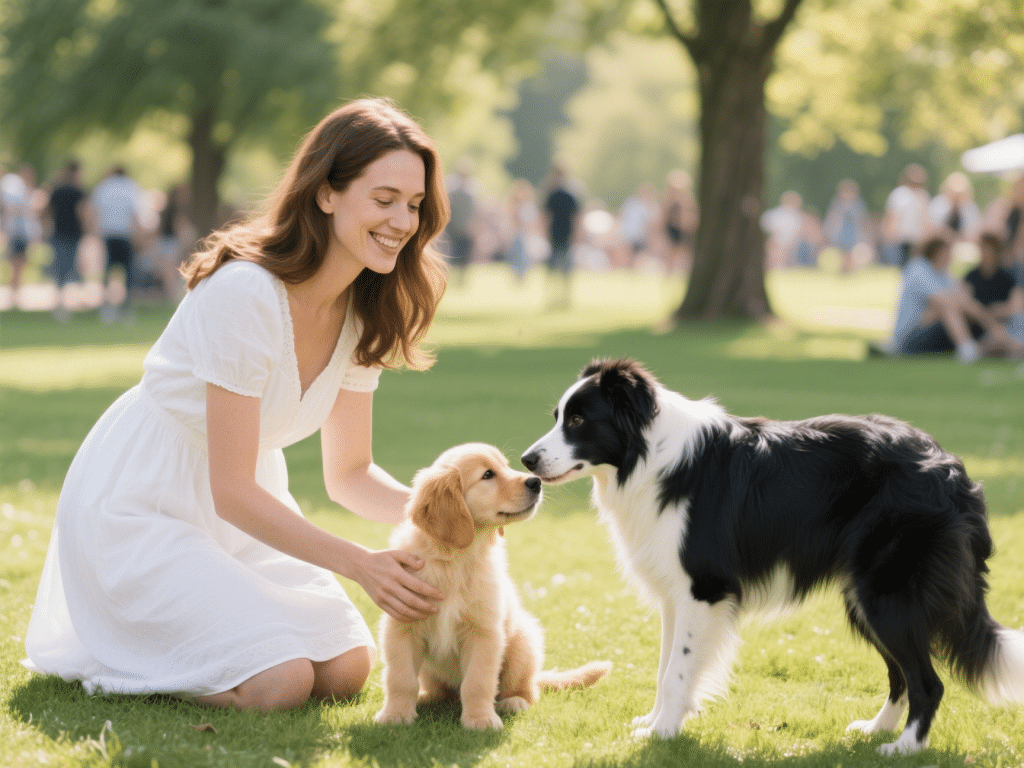How to Puppy-Proof Your Living Room Without Ruining It

Introduction
Welcoming a puppy into your home brings joy—and potential chaos. Furniture chewing, potty accidents, and knocked-over décor are common in eager, teething pups. Puppy-proofing your living room doesn’t mean sacrificing style. With thoughtful adjustments and strategic products, you can create a safe and aesthetically pleasing space.
1. Identifying Common Hazards
Electrical Cords and Outlets: Puppies are curious and may chew cords, risking electrocution.
Fragile Décor and Breakables: Vases, glass coffee tables, and decorative objects can shatter if knocked over.
Toxic Plants and Household Items: Pothos, lilies (for cats), and certain holiday plants (poinsettias) are toxic. Cleaning supplies, medications, and small choking hazards should be stored securely.
Unprotected Sharp Edges: Coffee tables with sharp corners pose injury risks for energetic puppies.
2. Strategic Furniture Arrangement and Protection
Use Furniture Shields and Corner Guards: Install clear, adhesive edge bumpers on coffee tables and entertainment centers to reduce chewing and accidental bumps.
Elevate Fragile Items: Place breakables on high shelves or wall-mounted display cases beyond puppy reach. Consider closed cabinets with glass doors for safe visibility of valuable objects.
Choose Puppy-Resistant Furniture: Opt for leather or microfiber sofas—durable materials less susceptible to claw and tooth damage. Removable, washable slipcovers protect upholstery from stains and fur.
Anchor Top-Heavy Furniture: Secure bookshelves, TV stands, and cabinets to the wall with anti-tip straps to prevent them from toppling if climbed or bumped.
3. Securing Electrical and Hazardous Zones
Cord Management Solutions: Use cord concealers or cable management boxes to hide and protect wires. Cover outlets with sliding safety plugs.
Restrict Access with Decorative Gates: Stylish pressure-mounted or retractable gates can section off high-risk areas. Look for wood or metal designs that complement living room décor.
Hide Cleaning Supplies and Small Objects: Store cleaners, remotes, and small décor in locked cabinets or high drawers. Utilize high shelves or childproof boxes.
4. Designated Puppy Zone
Create a Cozy Corner: Use a plush pet bed or crate with a washable cover. Surround this area with chew-resistant toys (rubber Kongs, Nylabones) to encourage appropriate chewing.
Place Puppy Pads or Training Mats: For initial house training, lay puppy pads in a discreet, yet accessible, corner lined with an easy-to-clean rug. Gradually move them toward your desired potty zone to establish routine.
Use Stain-Resistant Rugs and Flooring Rugs: Choose low-pile, washable rugs for comfort and easy cleaning. Avoid shag carpets where accidents can seep deeply.
5. Toy Storage and Organization
Stylish Baskets and Bins: Store toys in decorative baskets with lids to minimize clutter. Encourage organizational habits by teaching your puppy to retrieve toys from a specific bin.
Rotate Toys Regularly: Keep only a few toys out at a time—rotate weekly to maintain novelty and reduce mess. Excess toys on the floor can become tripping hazards.
6. Training Aids and Positive Reinforcement
Use Bitter Sprays on Furniture: Safe, pet-friendly deterrent sprays discourage chewing on wood or upholstery. Test a small, hidden area first to ensure no discoloration.
Reinforce Good Behavior: Reward your puppy with treats and praise for chewing on toys instead of furniture. Consistency and patience during crate training and supervised playtimes reduce temptation.
Interrupt Unwanted Behavior: If your puppy starts chewing on forbidden items, calmly redirect them to an approved toy. Avoid harsh punishment—use redirection and positive reinforcement.
7. Maintaining Aesthetic Appeal
Choose Cohesive Color Schemes: Select puppy-proof accessories (gates, toys, covers) that match or complement living room colors—e.g., matte wood gates in natural tones or neutral-toned storage bins.
Incorporate Dual-Purpose Furniture: Ottomans with storage can hide dog supplies while serving as extra seating. Coffee tables with lower shelves allow décor display above, and toy storage below.
Opt for Minimalist Décor: Fewer knickknacks reduce hazards and cleaning time. Select sturdy, dog-safe accents like ceramic planters (with non-toxic plants), weighted candle holders (for safe lighting), and wall art hung securely.
8. Regular Maintenance and Supervision
Frequent Cleaning: Vacuum pet hair daily to prevent matting and maintain a clean appearance.
Inspect Chewing Damage: Check furniture and baseboards regularly. Repair minor chew marks promptly to prevent further damage.
Supervise During Exploration Phase: Puppies test boundaries; supervise free roaming until trust and training are established. Use positive reinforcement to guide behavior.
Conclusion
Puppy-proofing your living room is achievable without compromising style. By combining functional design elements—such as cord concealment, chew-resistant decor, and aesthetic gates—with consistent training and positive reinforcement, you create a safe, welcoming space. Thoughtful organization, quality materials, and patience will ensure both your puppy and your living room remain happy and harmonious.
RECOMMENDED NEWS

How to Make Homemade Frozen Dog Treats for Hot Days
2025-06-10

How to Help Your Dog Adjust to a New Baby at Home
2025-06-11

What Every Pet Owner Should Know About Seasonal Allergies
2025-06-08

How to Choose the Right Litter Box for Your Indoor Cat
2025-06-10

Puppy Socialization 101: How to Raise a Friendly Dog
2025-06-12

Effective Dog Flea Prevention Strategies for a Happy Pet
2025-06-08
Comments on "How to Puppy-Proof Your Living Room Without Ruining It" :